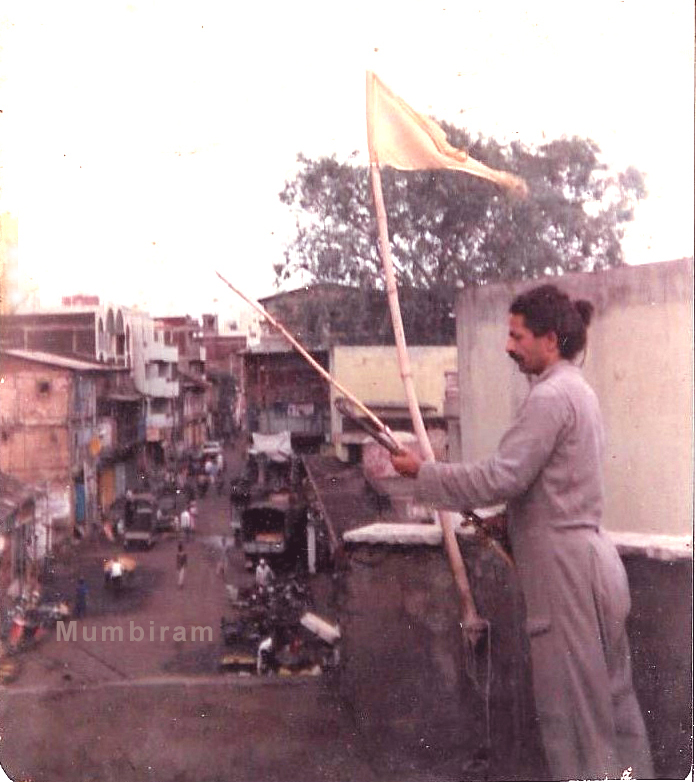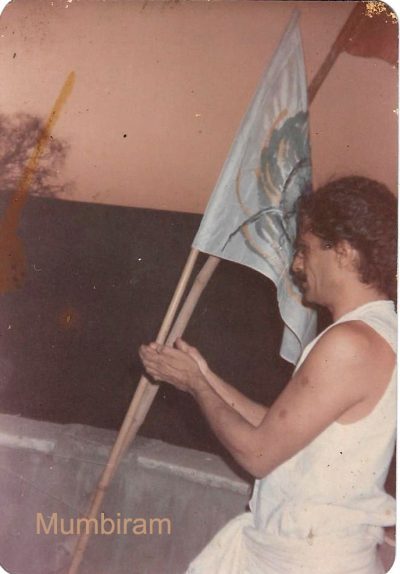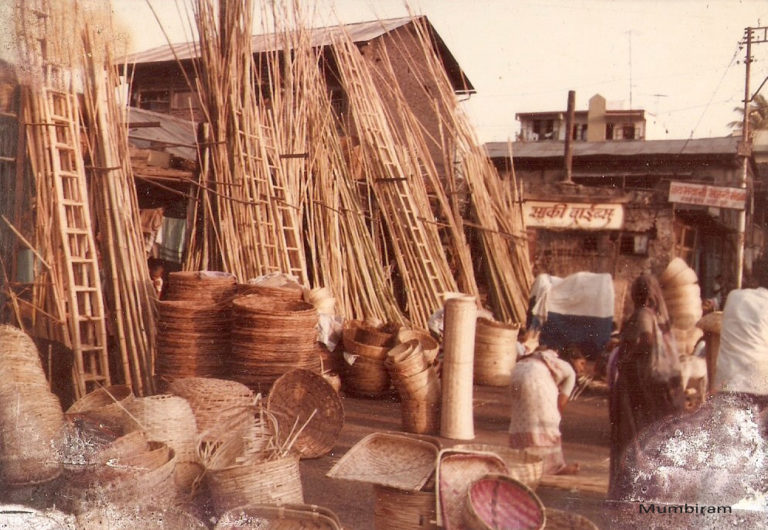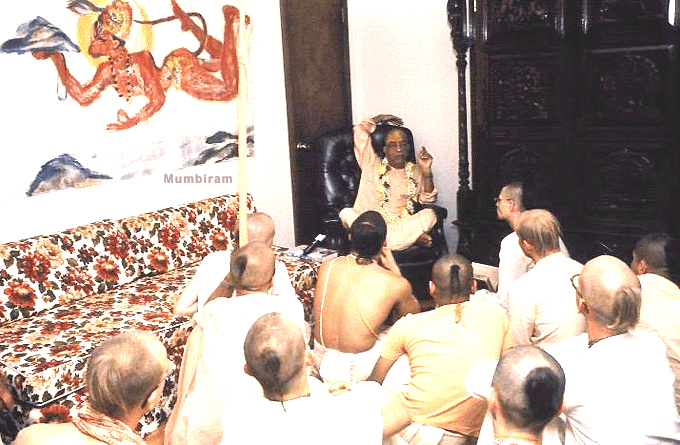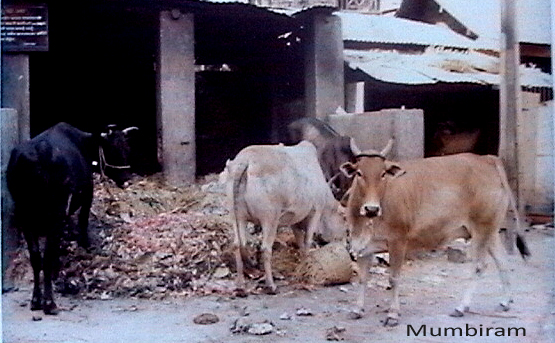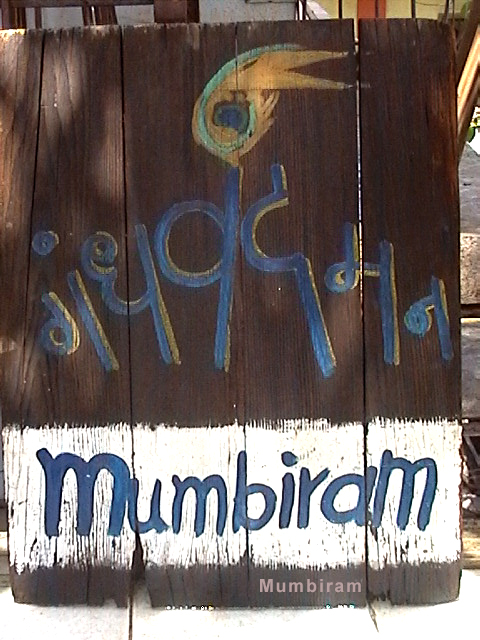
This board is one of the earliest banners that Mumbiram created. This was not what it began as. There is a curious history that one discovers. Look at these two photos:
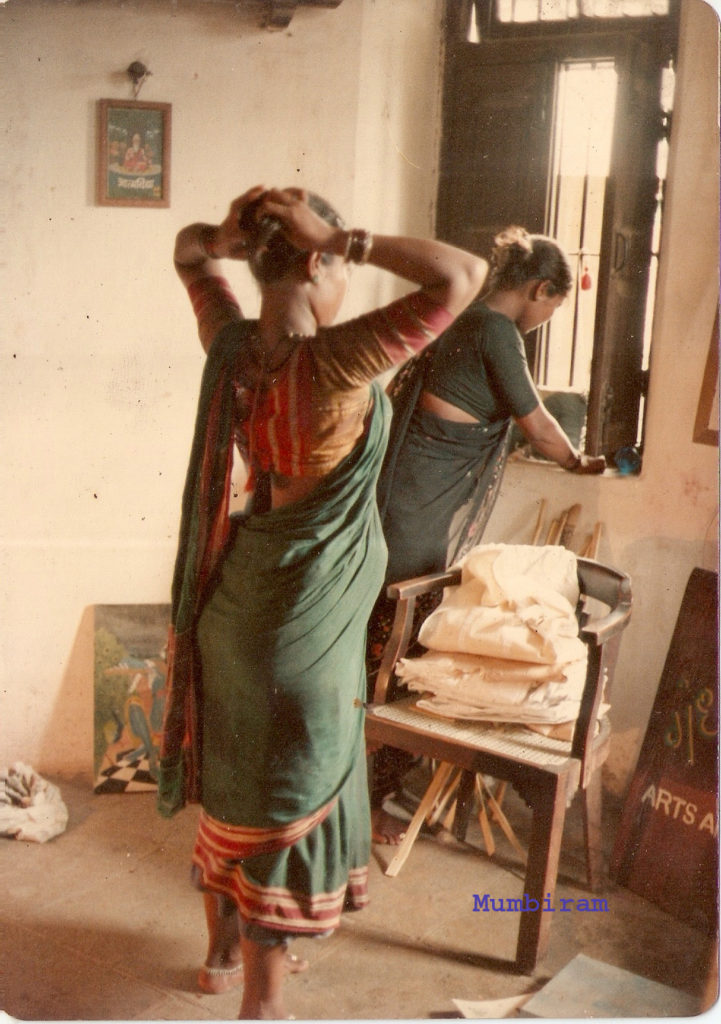
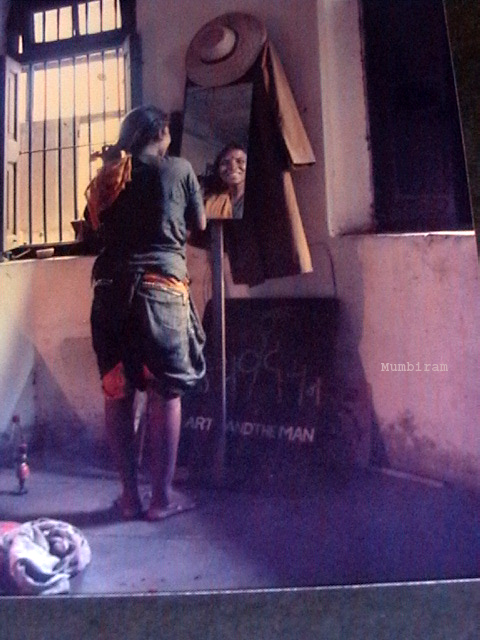
These two photos are time capsules. They are both shot in Mumbiram’s legendary atelier near the downtown Mandai market place in Pune. They appear to be made on the SLR camera with auto exposure that Hans Sittenauer from Bavaria had let Mumbiram keep. The year is therefore 1985 or 86. Both photos have a wooden sign-board standing on the floor against the wall. It shows the word GANDHARVADAMAN written in Devanagari on the top. It is the same sign- board that later appeared outside on the wooden railing around the curved corner of the balcony. There it had Mumbiram written over the words Arts and the Man that appear on the board in these photographs.
Knowing that Mumbiram was an admirer of George Bernard Shaw, it can be safely and significantly surmised that Arts and the Man rhymes with Arms and the Man. Amazing. Both have balconies involved in the plot. The plots form an intricately entwined drama. If Shaw was illustrating in an incredibly astonishing way what role armed conflict really plays in human society in our times, Mumbiram was scripting and producing this illustrated drama presenting an entirely refreshing version of the classical Rasa aesthetics of Art in a new Renaissance ideal.
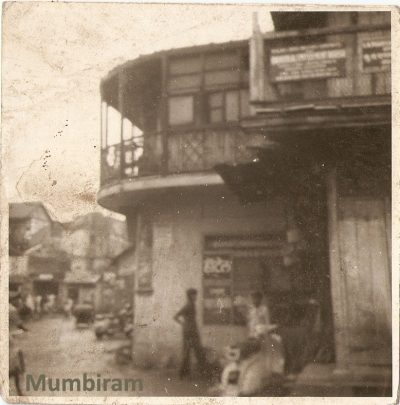
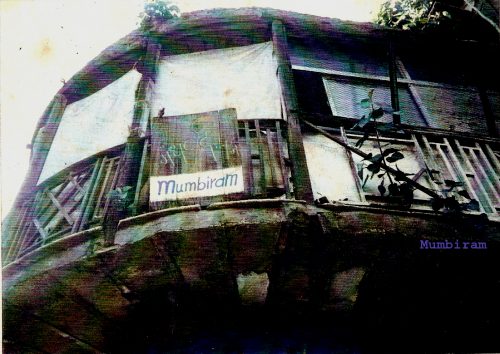
This board is one of the earliest banners that Mumbiram created.
Gandharvadaman means subduing/surpassing/defeating the heavenly practitioners of the arts of music, dancing, singing etc.etc. In the Mahabharat we come across Chitrarath gandharva who had captured Duryodhan who had come to the forest to humiliate the Pandavas who were now residing in disguise after escaping from the holocaust of the Palace of Lac. Arjuna had defeated Chitrarath and his army and captured the gandharva. Arjuna then had cousin Duryodhan released from Chitrarath’s captivity. Gandharvas are practitioners of the performing arts without any commitment to the noble ideals of a just human civilization. Arjuna had nothing against the Arts. He himself was a sensitive and graceful personality. He would become the dance teacher for the princesses in King Virata’s court. Arjun was a topmost vaishnava. He was in direct relationship with the Supreme Personality of Godhead in a friendly mood. He was committed to the transcendental morality that vaishnavas consider themselves committed to.
